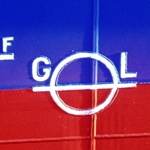GL Acknowledges Longer lasting Coatings
 Germanischer Lloyd (GL) has acknowledged longer lasting coatings and has introduced an extended dry-docking (EDD) option for container vessels, general cargo ships and multi-purpose dry cargo vessels. GL offers owners and operators the chance to extend the dry-docking period from five to seven-and-a-half-years, providing maximum scheduling flexibility while maintaining the highest standards of quality and safety.
Germanischer Lloyd (GL) has acknowledged longer lasting coatings and has introduced an extended dry-docking (EDD) option for container vessels, general cargo ships and multi-purpose dry cargo vessels. GL offers owners and operators the chance to extend the dry-docking period from five to seven-and-a-half-years, providing maximum scheduling flexibility while maintaining the highest standards of quality and safety.
Owners who previously would have had to look for an available dry-docking facility each five years can now have their ship inspected at dock-side. The new scheme reflects advancements in coating technology, such as self-polishing coatings, which have a longer life and reduce organism growth on hulls. While the extended dry docking offers tremendous flexibility and savings in positioning and docking costs, it also reduces the off-hire times and allows owners to bring additional scheduling options to the table during charter party negotiations.
“We are convinced that owners who implement the current technological options, and who maintain a stringent planned maintenance programme, can take advantage without undermining quality or safety,” says Mr Matthias Galle, GL Vice President for Classification and Technical Matters. “Our discussions with the Liberian, Marshall Islands, Antiguan and Singaporean flag states, as well as with the German maritime authority BG Verkehr, formerly SBG (See-Berufsgenossenschaft), indicate that, with some reservations, they are in general agreement on this point.”
To assure the highest levels of quality and safety, only ships meeting GL’s entry requirements are allowed into the programme. These requirements include flag state programme approval and the fitting out of the ship with GL class notation IW (in-water). All ships must have a GL-approved planned maintenance system for the hull (e.g. GL HullManager) as well as for machinery. In addition, the ship must be fitted with a shaft bearing and sealing system of approved design with implementation of regular monitoring procedures.
For newbuildings, the hull dry film thickness must be a minimum of 300µm, excluding anti-fouling, and the ship must be fitted with anodes prepared for seven and a half years and/or have an impressed current system installed and maintained. For fleet in service ships, ballast water tanks must maintain a ‘good’ condition according to IACS Rec. 87, and the vessel must be free of any condition of class concerning underwater parts. In all cases, GL reserves the right to suspend the programme at any time if it is determined that an out-of-water inspection is necessary. In addition, this new scheme only works together with owner, flag state and class. In the case of a change in owner or flag, the EDD approval may be waved and a dry-docking is immediately due/required.
The GL EDD programme places great importance on planned hull maintenance, and ships for which a system has already been implemented will require GL approval as a condition of acceptance. For those ships without a planned hull maintenance system, GL Maritime Software offers GL HullManager. The tool supports the management of asset integrity for the ship’s hull, the implementation of an inspection strategy, the input of thickness measurement results from GL Pegasus, the marking and assessing of findings in 3D, the attachment of photos to the 3D model, the synchronising of onboard and onshore databases, and the planning of repairs. It also offers a variety of ways to present results, using colour coding to indicate problem areas. With GL HullManager, EDD programme participants benefit from detailed knowledge of where and when inspections and repairs must be performed, early warning of degraded hull condition that helps to avoid costly surprises in dry-dock, and an overview of fleet status that allows avoidance of similar problems with sister vessels.
For owners and operators with a need for more detailed knowledge of GL’s EDD programme, GL Academy offers a half-day seminar for fleet managers and superintendents. During this seminar, programme requirements, criteria and all necessary documentation will be presented in detail, and an example of the complete process from initial application for entry into the programme through to acceptance will be explained. The first training dates will be available in early May of 2010.






